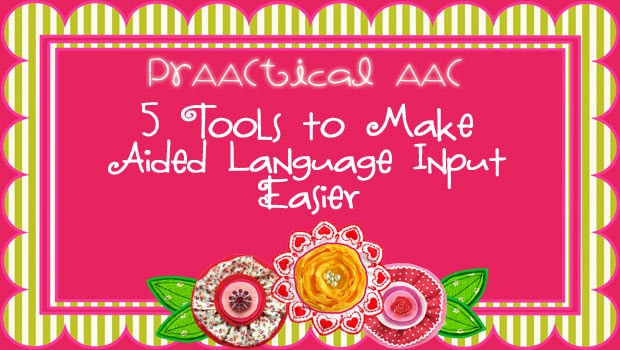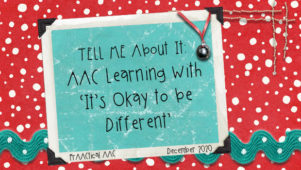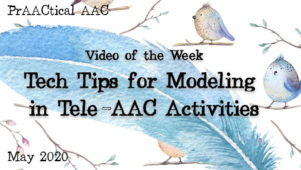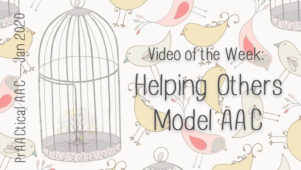5 Tools to Make Aided Language Input Easier

/pencil%20toppers%20walk%20in%20my%20world.jpg)
If you’ve been following our blog, you know that we consider aided language input to be a pivotal skill for any SLP working with a client who uses AAC. You can read more about aided language input on our earlier posts, but the shorthand version is this…
–
People learning AAC need to see/hear competent models of their AAC system frequently. As a clinician, you have to ‘speak AAC’ by using their communication tools or a reasonable facsimile.
–/maglite%20mini.jpg)
The more WE use the communication boards, books, SGDs, and apps, the more the learner will, too. Sometimes, your finger is all you need. But what if you have a poster-sized wall mounted AAC display that you are using to ‘talk’? What if the AAC learner needs some help to notice what you are doing? Here are some tools that can help.
–
1. Maglite or Laser Pointer (used with safe practice guidelines): These are great tools for extending your reach literally and figuratively. Point and highlight for a great ‘no contact’ means of drawing attention to symbols and messages that you are saying.
–
2. Squeakers and Noisemakers: When kids are distracted, sometimes a little sound will get their attention. I sometimes hide a tiny squeaker in the palm of my hand and squeeze it as I am pointing if the learner needs some help staying focused. On a good day, the little squeak is just enough to get us back on track. I sneak them out of toys and novelty items we no longer want and recycle them for this purpose. Experiment with the sound your squeakers make: too loud or the wrong pitch can cause more problems than they solve.
–/word%20wands%20lakeshore.jpg)
3. Word Wands: Teachers use word wands like these or fly swatters with holes cut in the middle to help their students focus on a particular letter or word. We’ve co-opted this idea and have even used it to help little ones just learning to use eye gaze SGDs.
–
4. Thematic Pointers: Use pencil toppers, like the ones shown here, to keep things interesting AND give learners an opportunity to choose the pointer for the session. If you’re crafty and want to make your own pointers from dowels, here’s a DIY video from the folks at ChildCareLand. Need more ideas? Check out this Pinterest Board by Julie Brown.
–/finger%20puppet.jpg)
5. Finger Puppets: Like pencil toppers, you can find a lot of inexpensive finger puppets to slip on and use when you are doing aided language input. We love the added bonus of these tools: a ready opportunity for the learner to choose which one you should wear.
–
Filed under: PrAACtical Thinking
Tagged With: aided language input
This post was written by Carole Zangari




